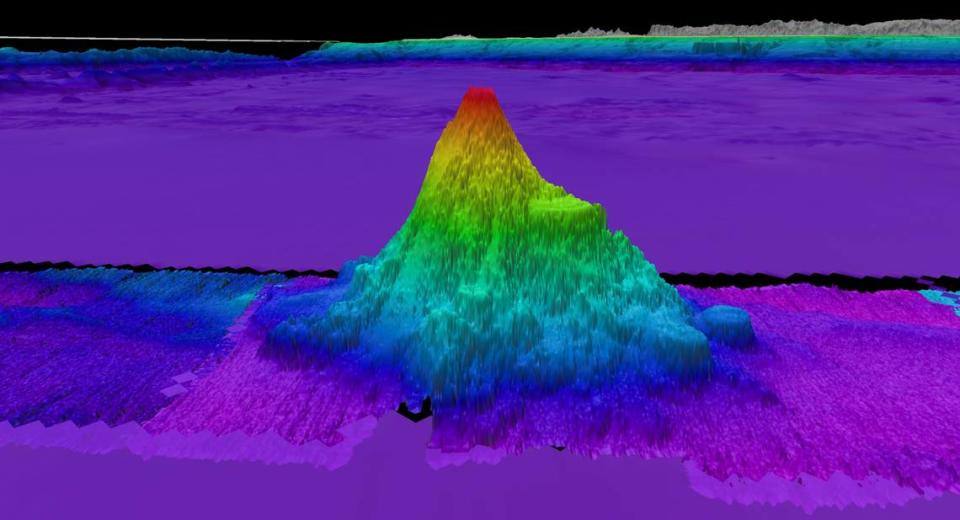1.5-mile high mountain discovered when scientists investigate ‘bump’ on ocean surface
A team of scientists investigating a subtle “bump on top of the ocean” off South America discovered a hidden mountain that stands 1.5 miles high, researchers say.
It’s one of four dead volcanoes found in January by the Schmidt Ocean Institute’s research vessel Falkor (too) in the South Pacific from Costa Rica to Chile, according to a news release.
The seamounts range from 5,220 to 8,796 feet high and reign over a mysterious submerged world that is largely unmapped, experts say.
They were found as the crew investigated “gravity anomalies” that showed up on mapping technology as “an almost imperceptible bump on top of the ocean.”

“Examining gravity anomalies is a fancy way of saying we looked for bumps on a map, and when we did, we located these very large seamounts,” hydrographic expert John Fulmer said in the release.
Images created by the scientists show the rugged 1.5-mile tall seamount covers about 280 square miles and sits 3,772 feet below the surface, the institute says.
The other three seamounts range from a classic cone-shaped volcano to something similar to the flat-topped Devil’s Tower in Wyoming, photos show.
Seamounts are submerged mountains largely believed to be “remnants of extinct volcanoes,” according to NOAA Ocean Exploration. To be classified as a seamount, the summits must tower at least 3,300 above the surrounding seafloor.
The towers are known to host an abundance of marine life, which makes them of interest to scientists.
“Typically, they are cone shaped, but often have other prominent features such as craters and linear ridges and some, called guyots, have large, flat summits,” NOAA says.
“Based on data ... the number of seamounts that are at least 1,000 meters high is thought to be greater than 100,000. Despite their abundance, however, less than one-tenth of a percent of the seamounts in the world have been explored.”
The Schmidt Ocean Institute has discovered 29 seamounts, hills, and trenches while mapping “about 1.5 million square kilometers” of seafloor, officials say.
Massive find made by seafloor mapping team in Pacific Ocean, scientists say
Massive mountain almost as big as Oregon’s Mount Hood found in the ocean off Canada
Startlingly round formation with steep, smooth sides found on seafloor off California

